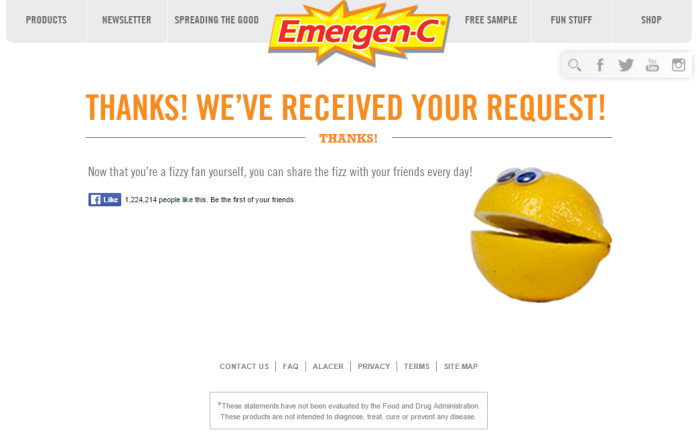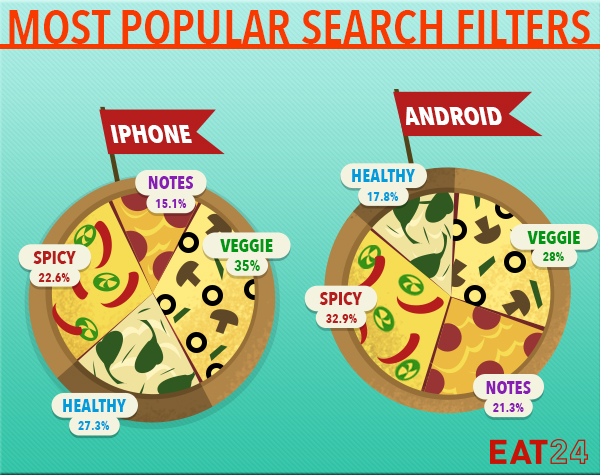Underutilized but Effective: 5 Ecommerce Marketing Opportunities for 2016
Editor’s Note: This is Part 4 in our latest series which explores the ever-evolving world of Ecommerce to extract insights for how brands and marketers can compete and thrive in 2016. In case you missed our earlier articles, here are Part 1, Part 2 and Part 3.
Among Ecommerce brands, there is a common thread: many rely on search engine optimization, pay-per-click ads and sponsored product listings to market their business. To diversify their traffic sources, some partner with affiliates to help sell their products. Others use email to re-engage their existing customer base. But with the year coming to a close and 2016 just days away, we thought it worthwhile to spice things up. Even if you have already finalized your Q1 marketing plan, here is a list of five incredible strategies that can help supercharge growth in the New Year.
Capitalize on customers’ smartphone habits
“Mary Meeker of Kleiner Perkins Caufield & Byers released a data point earlier this year that is just astounding: there’s a $25 billion dollar mismatch in the amount of time consumers spent in mobile media versus mobile advertising spending,” says Marissa Tarleton, CMO of RetailMeNot, Inc.’s North America division. “Retailers should increase their mobile marketing budgets across all spend to close this gap.” For many brands, this means developing mobile-optimized creatives and buying ad inventory across media properties. But others have taken a different approach to capture mobile consumer mindshare and convert that into sales.
According to Jeff Steeves, vice president of marketing at Rue La La, “Our Members are spending a huge amount of time on mobile devices. The convenience of the mobile phone allows Members to engage with brands and content wherever they are. In 2015 we invested significantly in further improving the experience of our best-in-class mobile app and increased our promotion of the app. Once our Members experience Rue La La and the experience on the app they love us even more! With that said, over 50% of our total sales now happen on mobile devices and we see that growth continuing.” As a flash sales portal, Rue La La’s mobile app is the perfect companion for the shopper who is ready to pounce on the right deal at a moment’s notice.
Fresh foods delivery service Blue Apron, on the other hand, uses its popular smartphone app to help users cook their next perfect meal — and, so far, it’s been a hit. This month, Apple announced its Top 25 Apps of 2015 and Blue Apron’s iOS app scored the 25th spot. Over email, a company representative notes, “The mobile app highlights all of the educational cooking content we create at Blue Apron — customers and non-customers alike have access to hundreds of Blue Apron recipes and how-to videos. The personalized cooking experience that the mobile app provides makes it easier and more fun for our home chefs to cook incredible meals with Blue Apron.” Instead of using its mobile app as an acquisition channel, Blue Apron uses it as a tool to enhance the customer experience, allowing users to extract more value from their purchase.
Crowdfund new products and reintroduce old ones
A common misconception among companies is that crowdfunding campaigns are for businesses that need financial support. For those in-the-know, platforms like Kickstarter and Indiegogo are brilliant distribution channels.
In 2012, Fortified Bicycle introduced its first product, a theft-resistant bike light, on Kickstarter and raised $84,728 from 1,175 backers. The next year, it reinvented its flagship product and raised more than double that amount in its second crowdfunding campaign. But in 2014, things changed. The company graduated from the prestigious startup accelerator Techstars and secured $800,000 in seed funding from investors. With cash in the bank and new products in development, Fortified Bicycle had plenty of opportunities ahead. Offline, it secured partnerships with brick-and-mortar stores and now distributes its cycling accessories through 242 authorized dealers. Online, Kickstarter remains the startup’s go-to platform for product launches. In fact, Fortified Bicycle just launched its fourth campaign for its city-proof bicycle called the Invincible. With approximately 30 more days to go, the business has raised more than $90,000 from backers on the crowdfunding site.
Apparel company Flint and Tinder, similarly, raised $850,000 from investors but only after its first Kickstarter campaign earned the support of 5,578 backers who pledged $291,493. The following year, it launched its second project, the 10-year hoodie, which went viral and pre-sold more than $1 million worth of product. Of course, not every brand will have something new they are prepared to introduce to the world. In those instances, some have turned to Kickstarter and Indiegogo to promote existing products.
Experiment with price
The first price tag you slap on a product is rarely ever right. Some shoppers would willingly pay more while many would only purchase if it was just a bit more affordable. Yet, when brands think about their prices, they prioritize the wrong metrics such as customers acquired or lost and items sold. Instead, stores should seek to maximize their profits. Thus, the two questions Ecommerce entrepreneurs should ask themselves are:
- If I increase my prices, will my overall profit increase even if demand decreases?
- Alternatively, if I lower my prices, will there be a large enough boost to sales such that our bottom line grows too?
To automate price tests, stores can employ dynamic pricing. In an article for Econsultancy, Arie Shpanya explains dynamic pricing as, “A pricing strategy in which prices change in response to real-time supply and demand.” He adds, “Dynamic pricing allows retailers to remain competitive with 24/7 price monitoring and changes, boosting profits by 25% on average.” Currently, solutions like Ventata and Wiser enable brands to seamlessly reprice products and find the perfect balance between customer demand and profits.
Optimize your “Thank You” page
After customers browse a store and complete their order, many brands prematurely end the interaction. Often times, shoppers are left to their own devices — ushered back to a site’s homepage, where they either decide to continue shopping or exit the site. Yet, this is a rare moment in which customers are fully engaged.
For The Next Web, conversion optimization expert Alex Bashinsky writes, “Every time a visitor purchases a product from your site (or undertakes any other conversion activity you’ve defined), they’re as engaged as they’re ever going to be. They’re feeling confident about their decision and optimistic that the risk they’ve taken in working with you (versus your competitors) will be the answer to their problems. If you were looking to further engage your current customers, there’s almost no better time than your Thank You pages.” In his article, Bashinsky lists seven things stores can do to capture more value from shoppers who have just completed a purchase:
- “Direct them to another page on your site”
- “Ask buyers for a social share”
- “Offer a coupon code for a future purchase”
- “Invite them to an upcoming webinar [or event]”
- “Encourage them to set an appointment”
- “Provide an opt-in opportunity [to your newsletter]”
- “Prompt an app download”
Use data to tell fun and newsworthy stories
When I first began my career as a marketer in 2009, I was a college student who couldn’t afford to “invest” money into ads. So, I learned how to do inbound marketing and made public relations (PR) my primary area of focus. I pitched the story of Blank Label, a custom menswear company I co-founded, to any and every blogger or journalist I could find on Twitter, LinkedIn and email. As an amateur PR rep, I somehow managed to garner press in top-tier publications like BusinessWeek and Mashable within our first three months in business. By month six or so, I had secured placement in The New York Times which led to a 4,000% increase in sales.
Back then, getting press seemed easy. Today, it is absurdly hard. Media outlets are more selective about the companies they cover because competition for reporter mindshare is fierce. In its startup activity report, the Kauffman Foundation found that 6 million American adults started a new business in 2014. With millions of entrepreneurs all clamoring for press, businesses need to really do something both amazing and unique in order to stand out. And one advantage every brand has is access to proprietary data.
Over the years, food delivery service Eat24 has tracked millions of delivery and takeout orders and learned a lot about its customers awesome (and embarrassing) eating habits. So, in August, the company decided to compile a report determining which of its diners ate healthier, segmenting its users into two already divided camps — iPhone vs Android users. The study revealed that iPhone users were more likely than Android users to:
- Select the “healthy” filter when ordering food (27.3% vs 17.8%)
- Add a vegetable item to their order (35% vs 28%)
- Place a pickup order instead of a delivery (2x more likely)
iPhone users were amused, Android users not so much. Fortunately though, a few influential bloggers loved it. 9to5Mac, CNET and Bustle have all given Eat24 a well-deserved kudos.
In 2016, what are some underappreciated strategies you plan to employ to market and grow your business?




